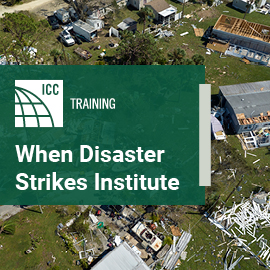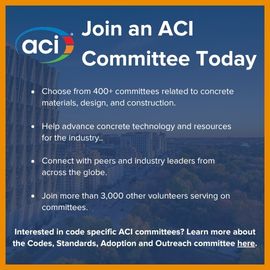
Using Building Model Codes in Eliminating Blight and Combating Crime
By enforcing building model codes, communities create safer environments, deter criminal activity and encourage economic growth.
Code enforcement officers play a critical role in keeping our neighborhoods safe and are the unsung heroes who work tirelessly to keep our buildings resilient, sustainable and accessible.
Not only do they safeguard our communities from nuisance properties, but they also tackle emerging problems that might not fall under law enforcement’s purview. It’s a big responsibility, but code officials are equipped with all the necessary tools and support from jurisdictions across the country to succeed and encourage compliance.
Challenges Faced by the Code Enforcement Profession
The field of code enforcement is constantly changing, bringing about new challenges for code enforcement officers.
Recently, there has been an increase in the number of vacant and abandoned properties, further compounding the lack of adequate housing. The aging of structures and lack of maintenance have led to substandard conditions. These factors have contributed to the rise of what we refer to as “problem properties.”

When criminal elements enter the picture, it becomes crucial for law enforcement to ensure that problem properties comply with local regulations and lean on code enforcement for assistance. As someone who has worked as a consultant in multiple jurisdictions, I have witnessed that vacant properties often attract those looking for shelter or attempting to hide criminal activities and illicit acts.
Problem properties can be found in multiple jurisdictions, regardless of where code enforcement departments are located. Through my experience, I’ve learned that every jurisdiction has its way of tackling problems. Code enforcement can be handled by different departments, and each department brings its unique strengths to the table.
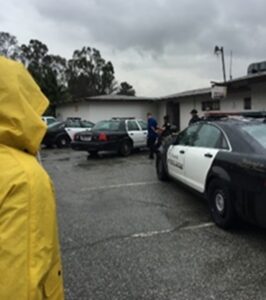
Sometimes code divisions fall under Community Development, Building Departments, Planning Departments, Finance Departments, Fire Departments, Police Departments, or they may even be stand-alone departments, each with their unique approach to combating issues.
SEE RELATED: The Importance of Building and Code Enforcement Collaboration
However, not all code officials can effectively use the tools available. This could be due to a lack of knowledge or insufficient training.
The International Code Council’s model codes and standards can be a game changer in ensuring long-lasting results or permanent compliance.
Addressing Blight Through Enforcement
The 2021 Property Maintenance Code® (IPMC) plays a vital role in getting rid of blight in many jurisdictions – offering comprehensive guidelines to tackle issues like dilapidated structures, abandoned buildings and neglected properties.
It’s crucial to understand that maintenance codes play a fundamental role in ensuring a safe living environment for everyone we serve. When it comes to addressing problem properties affected by blight, it’s not uncommon to encounter unsanitary or uninhabitable conditions. While aesthetics may seem trivial, they can often have deeper implications which may include mental illness, substance abuse, advanced age, poverty, lack of education about local ordinances, language barriers, or even just negligence.
However, no matter the cause, the IPMC provides tools that promote minimal standards for habitability.
The IPMC goes above and beyond by incorporating updated standards, covering a wide range of maintenance aspects, promoting consistency and standardization, ensuring legal compliance and ultimately improving safety.
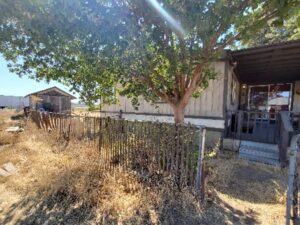
The IPMC provides a comprehensive framework that meets current safety and maintenance standards and considers the latest knowledge. It also ensures structures are well-maintained and in good condition to maintain the neighborhood’s aesthetics.
Enforcing Building Codes
Code enforcement officers also play a crucial role in upholding the safety and integrity of our constructed surroundings, even if their specific duties do not include building inspection. The International Residential Code® (IRC), International Building Code® (IBC) and International Fire Code® (IFC) all work to ensure that structures are stable, secure and adhere to minimum standards for occupancy. As a code enforcement officer, it is important to have some understanding of their origins or stay updated with modifications made to current model codes.
By adhering to these codes, communities can minimize the risk of accidents, injuries and health hazards within residential areas. While some states may not utilize these exact model codes, they often adopt their versions based on these codes.
Code enforcement officers must possess some foundational knowledge to avoid overlooking violations that could jeopardize the safety and well-being of community residents. It is crucial for them to accurately interpret regulations to ensure correct enforcement and prevent any potential legal consequences. By identifying building code violations, they can address issues with problem properties and ensure that they are not occupied if they fail to meet minimal housing standards.
Maintaining properties appropriately and ensuring folks are following building safety regulations contribute to creating a safer living environment for residents while enhancing overall community well-being.
Promoting Responsible Property Ownership
Model codes also promote responsible property ownership by setting standards for property maintenance and improvements. These codes discourage neglectful or negligent behavior by property owners, as compliance is required to meet community standards.
By enforcing these codes, communities foster a sense of pride in property ownership, leading to improved community aesthetics and increased property values. Code enforcement officers should always be able to identify and communicate with property owners effectively as they are responsible for what occurs on their property.
Notices and Order
As code officials, it is important for us to always keep in mind the need for due process, ensuring that we provide fair and impartial solutions to encourage voluntary compliance as outlined in model codes.
Notices and orders are essential in the enforcement of building codes and our model codes. A “notice” typically refers to a written communication sent to the owner, occupier or responsible party of a property regarding an observed code violation. This notice includes detailed information about the violation itself and instructions on how to rectify it within a specified timeframe. If the notice is not adhered to within this timeframe, an “order” may be issued.
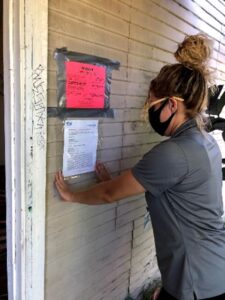
An order serves as a more formal directive and often carries penalties such as fines or legal action. In severe cases, it may even involve actions like repair work, demolition or closure of the building if steps are not taken to address the violation(s) at hand.
Notices and orders not only provide information to those involved about the required changes, but they also establish a feeling of immediacy and gravity regarding the issue. By elevating the enforcement action from a simple notice to an official order, governing bodies have the power to compel property owners to rectify code violations.
This ensures that regulations are followed and maintains the safety and overall quality of the community. Additionally, they inform individuals of their right to due process and guide how they can appeal against any decisions made against them.
Putting it all Together
Possessing fundamental knowledge of basic building codes allows one to spot exterior issues like faulty electrical systems or plumbing concerns that would typically violate regulations. It is reasonable to assume that similar issues may exist within the interior if they stem from structural elements originating inside the building itself. The only way to determine and confirm is through a visual inspection.
In many cases, the person in control of the property may not want you inside the property for a variety of reasons. Tools afforded to you in model code provisions under “Rights of Entry” may allow you access into the interior using an Administrative Warrant. Of course, one must have reasonable suspicion that violations exist and make every effort to obtain consent to inspect if one believes that there are substandard conditions that exist based on observations that you can see violate your IPMC, IRC, IFC or IBC.
When an administrative warrant is issued, you may inspect the property to observe all issues that may be hazardous. In some cases, you will discover that the property may be unsafe and warrant the property to be vacated under condemnation or unsafe to occupy order. It is important if you are executing an administrative inspection warrant that law enforcement is assisting you to ensure officer safety and to keep the peace.

Once you determine needed corrections, some may require extensive repairs, and many “problem properties” will not be able to come to compliance due to the inhabitants being unwilling or unable to cooperate, and additional escalation may be required, such as an abatement order, demolition, or civil action such as receivership.
Although this is never the goal, having these tools is essential to maintaining vibrant communities and ensuring problem properties come into adequate compliance. The goal is always to achieve cooperation and voluntary compliance. If you can bring a long-standing property into compliance, you will reduce the number of calls for service for both your code enforcement unit and law enforcement.
Understanding the Important Role of Code Enforcement Departments
Building model codes play a crucial role in eliminating blight, enhancing public safety and combating criminal activity within communities. These codes provide essential guidelines and standards for property maintenance, promoting responsible ownership and improved aesthetics.
By enforcing building model codes, communities create safer environments, deter criminal activity and encourage economic growth. Additionally, these codes support sustainable development practices, contributing to vibrant neighborhoods that discourage criminal behavior and promote overall community well-being.
SEE RELATED: From the Field: 7 Things Code Inspectors Wish Homeowners Knew
When creating a plan for addressing these types of issues, you must ensure that you have adopted these codes and have the ability and support to use them. This enforcement model can be used regularly to mitigate problem properties plaguing your community.
Learn more about the International Codes®, a family of fifteen coordinated, modern building safety codes that help ensure the engineering of safe, sustainable, affordable and resilient structures, here.





